The image on the wall delivers a message of warmth and messiness. Amanda Charchian calls it 7 Types of Love, Agape, and it presents a disembodied pair of female lips floating against a soft sea of pink, a cloud of blood seeping from the red lipstick. As a photograph, it’s torrid and abstract, expressing female sexuality in ways both subtle and direct in “Future Feminine” at the Fahey/Klein Gallery.
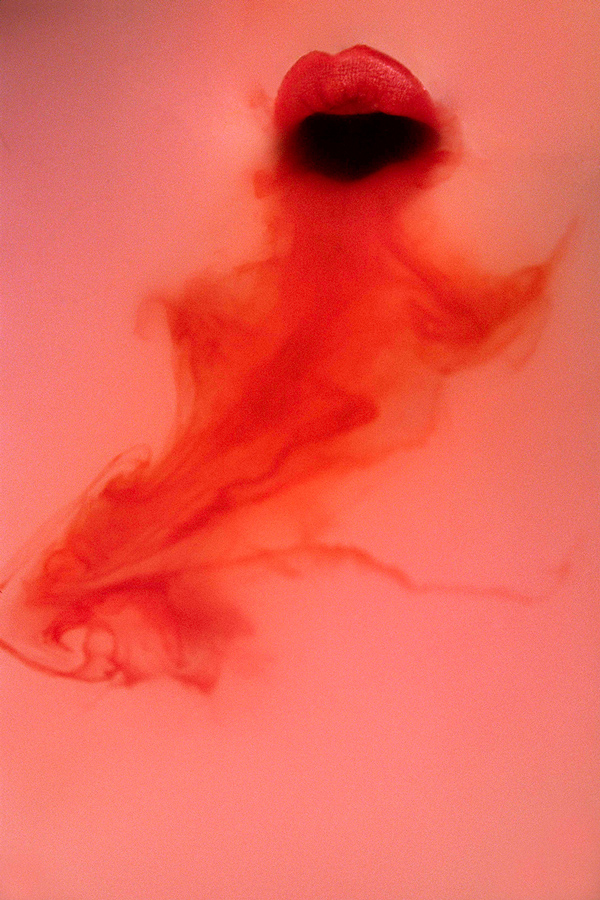
Amanda Charchian, 7 Types of Love, Agape, 2017
The photographer (and sculptor) Charchian provides one of four diverse bodies of work within the group exhibition, joining Remy Holwick, the duo Prue Stent & Honey Long and Magdalena Wosinska.
The gathering of female voices is a convenient way to add a new generation of artists to the gallery’s deep catalog of major names (already including Ellen Von Unwerth and the late Mary Ellen Mark). Of course, women have nothing to prove as photographers, having already been an essential creative force within the medium virtually from the beginning. Fading male dominance in the worlds of art, editorial and fashion has failed to eclipse that ongoing legacy.

Prue Stent & Honey Long, Venus Milk, 2015
Stent & Long depict female bodies in conceptual photographs entirely separate from the usual male gaze—or any recognizable gaze from popular culture. The pictures are playful and challenging, more about symbolism than traditional depictions of beauty—working through a kaleidoscope of pink, tender flesh, balloons and body parts, but rarely a face revealed. In Venus Milk, a woman is wrapped in moist fabric the color of Bazooka Joe, standing on the rocks in a puddle of pink liquid that seems to ebb from her clothing. In Fish-Net, a woman nude except for white netting has her back turned to the camera, giving her seemingly headless shape an appearance not unlike an Edward Weston bell pepper.
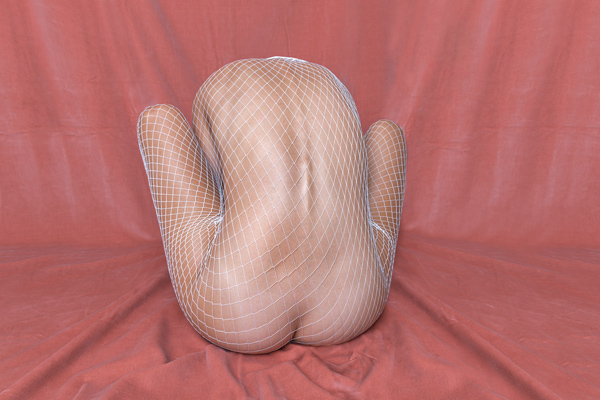
Prue Stent & Honey Long, Fish-Net, 2017
The artists of “Future Feminine” are mostly based in Los Angeles (Stent & Long live in Australia), with film cameras the preferred tool in many cases, choosing grain and rough edges over the dreary perfection of digital … while they still can.

Magdalena Wosinska, Fling, Seattle, 2011
At the opposite side of the gallery are pictures by Wosinska, an artist fully in thrall of the rock & roll life, all badass swagger and tight denim amid a population of skaters, bikers, topless women (including herself), baked bearded dudes and young models in corpse paint. Her high-octane milieu is a deeply American scene of timeless grunge and wild sexuality that could be circa 1975, 1993 or 2018. And her pictures rest comfortably at a nexus of reportage, street fashion and the rougher edges of commercial photography.
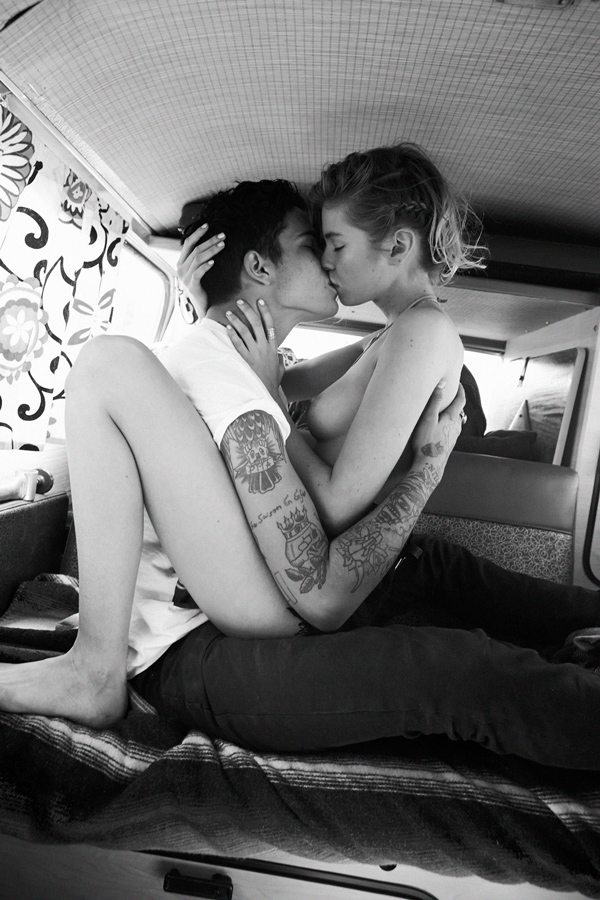
Magdalena Wosinska, Listening to Black Sabbath, Ojai, 2014

Magdalena Wosinska, Muddy Daze, Highland Park, 2009
Wosinska is known for a series of vivid self-portraits in the nude while standing within random landscapes around the world, and collected into a book, The Experience: Vol. 1. (10,000 Instagram followers so far.) None of that work is included here, focusing instead on portraits of couples entangled in states of undress: underwater, on the back of a Harley, wet and shivering for the camera, etc. Her five images in “Future Feminine” closely echo the increasingly prescient Larry Clark, who emerged during a more dangerous era. Wosinska’s black-and-white Listening to Black Sabbath, Ojai, as a nude girl makes out with a fully clothed tattooed boyfriend in the back of a van, could be something right out of Clark’s Teenage Lust (1983), or a Bruce Davidson picture before him. Some American traditions never go out of style.
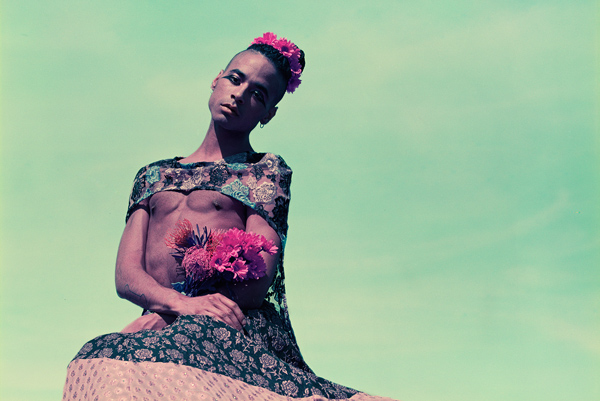
Remy Holwick, Velvet Moon #10, 2016
The pictures of Remy Holwick document theatricality in the Southern California desert, more Burning Man than Wosinska’s heavy metal parking lot. She’s a second-generation artist (daughter of the late painter Wayne Holwick) and model whose pictures at Fahey/Klein find a population of artists gathered at the Savage Ranch in the local desert to pose in flamboyant costume and body paint, creating moments of celebration and a blurring of genders in the orange afternoon light.

Remy Holwick, Mercedes #3, 2016
Show curator Nick Fahey calls Holwick’s work here documentary photography of a special group of people, but the aesthetic is pure fashion. Velvet Moon #7 is a close-up portrait of a woman with a crown of red roses, painted pink cheeks and turquoise eye shadow facing the light and camera like a sun goddess ready for the pages of Vogue.

Amanda Charchian, 7 Types of Love, Philautia 2, 2016
Charchian, too, shares pictures that are stylish and sexually charged. In one, a young nude model calmly looks into the lens as a python curls around her neck. Another, 7 Types of Love, Pragma, shows a nude in leather gloves holding a pair of blue eggs, hovering above the general vicinity of her own ovaries. It’s a provocative image, and one that required a woman with a camera to envision.
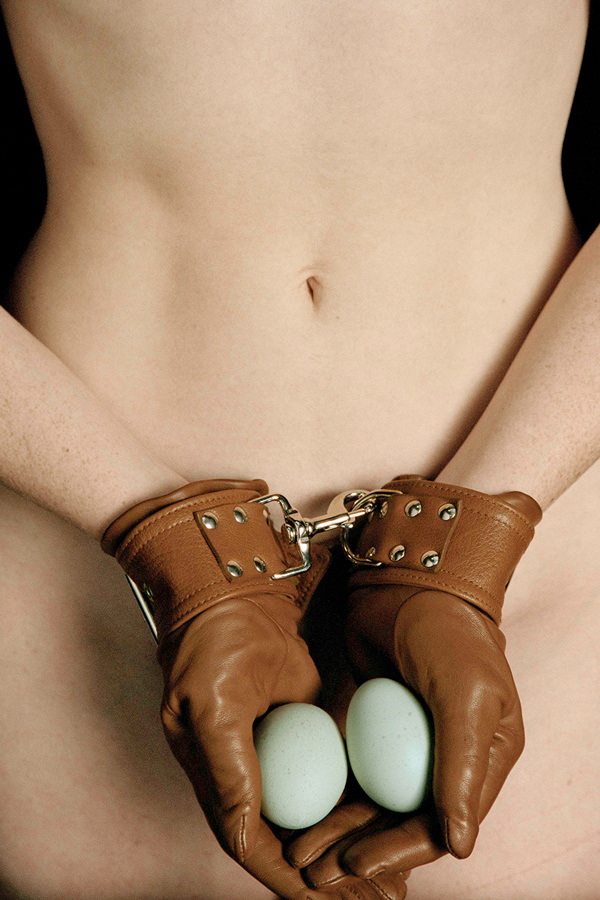
Amanda Charchian, 7 Types of Love, Pragma 1, 2017
“Future Feminine” ran through Jan. 18-Feb. 24 at Fahey/Klein Gallery in Los Angeles; faheykleingallery.com; all images courtesy Fahey/Klein Gallery.





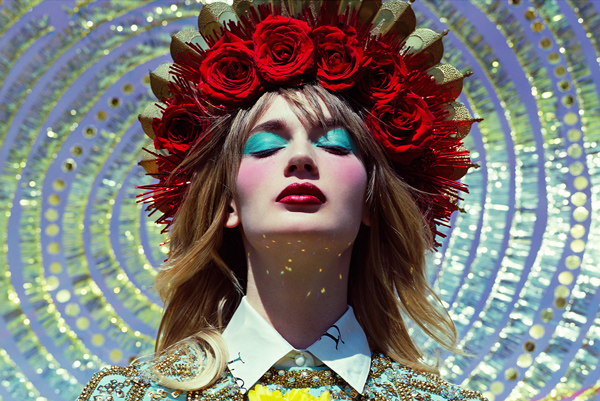





0 Comments